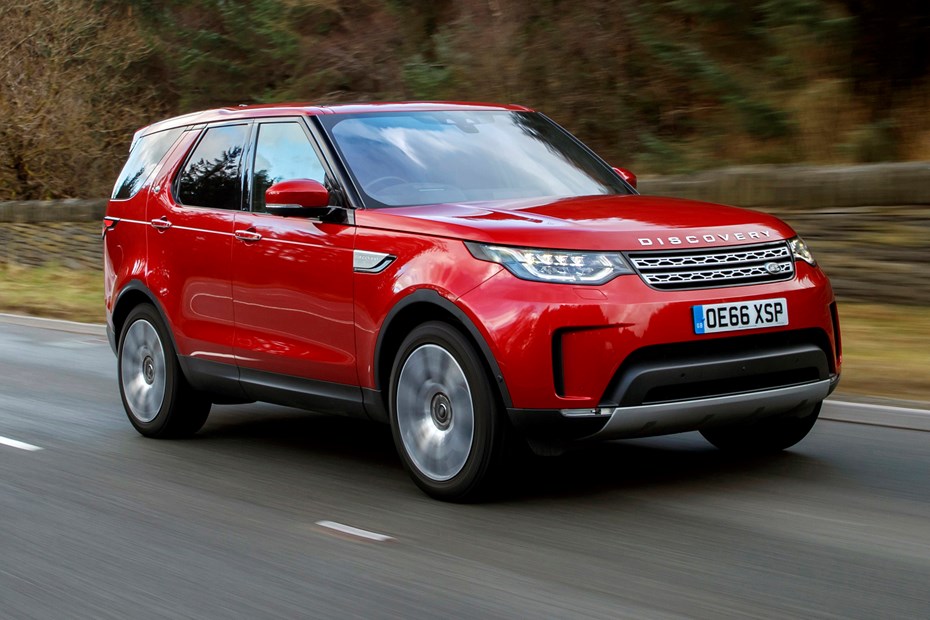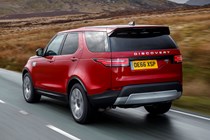What’s not up for discussion here are the Land Rover Discovery’s radically different looks – they’re as opinion dividing as its predecessor’s.
No, what’s of greater interest is whether this lighter model – everything’s relative, it still tips the scales at 2,230kg – can be a better all-rounder than the outgoing model, despite being powered by a 2.0-litre engine.
Surprising smaller engine option
You may have heard mention of Jaguar Land Rover’s new family of four-cylinder, turbocharged 2.0-litre petrol and diesel engines branded Ingenium; it’s the latter showcased here.

It’s the same motor fitted to the compact Jaguar XE saloon, but don’t let that be an excuse to suck the air of doubt through your teeth. In this application there’s 240hp available, but of more interest is the impressive 500Nm of torque from just 1,500rpm.
Gloss over the fact that most Discoverys will venture no further off-road than the occasional kerb-mounting down a narrow street – Land Rover’s reputation’s steeped in genuine go-anywhere ability.
Genuinely impressive performance
The engine fitted here has sufficient accelerative force for sprightly performance on the back-top, while still being able to haul itself up inclines you’d break into a sweat simply contemplate climbing on foot.
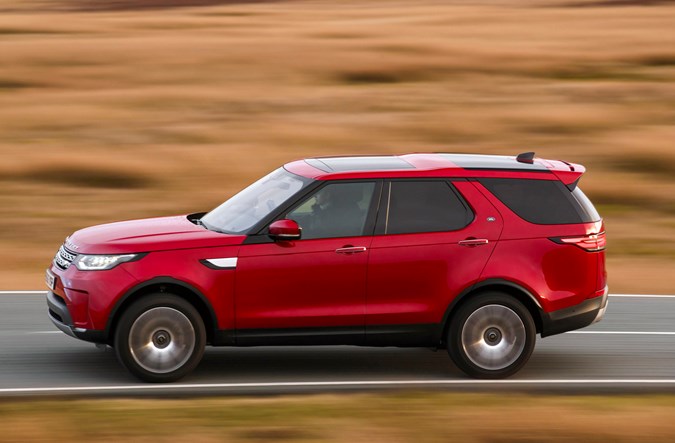
Officially it’ll crack the 0-60mph sprint in eight seconds flat, pushing on to a top speed of 121mph.
It can feel lethargic off the line, with a second delay before it moves in the manner you’d hoped from prodding the accelerator, but this gentleness helps modulate off-road driving speed as well as promote a more relaxed approach on asphalt.
The primary reason for the 2.0-litre’s availability is for even greater efficiency: Land Rover’s 43.5mpg average claim is unlikely to be achieved but 32mpg is a realistic prospect.
Emissions are quoted at 189g/km of CO2 meaning under the 2017/18 VED car tax rate you’ll be facing a first year bill of £800. Subsequent years will be £140, plus an extra £310 for years two to six due to its asking price being north of £40,000.
Nimbler on- and off-road
Fans of the outgoing Discovery will doubtless acknowledge that while it was cushiony soft over rougher road surfaces courtesy of its air suspension system, it had a tendency to wallow and lean along twistier sections of road.
Responding to customer feedback, Land Rover’s reappraised those characteristics for the newcomer: it remains a comfortable car, but in the pursuit of a more dynamic on-road experience, the suspension’s damping is a tad firmer meaning you feel more of surface imperfections. They’re not sharp and jolty, but they’re there all the same.
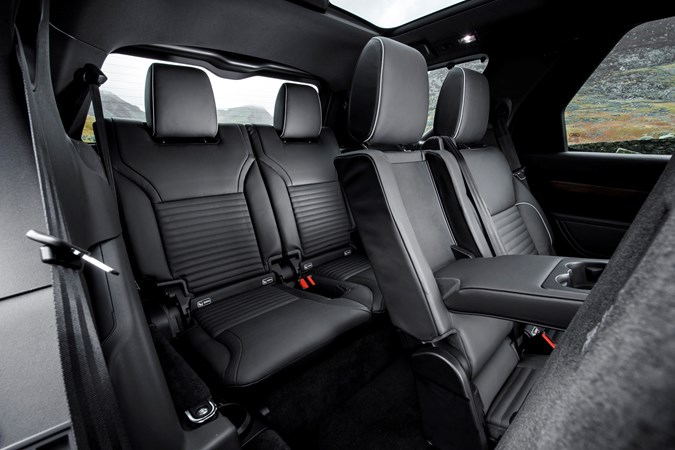
The trade-off is that it feels much wieldier and nimble – although on winding country roads the Discovery’s width is never far from the forefront of your mind.
All the controls are light – the steering arguably too much so – but all of that makes for a more relaxed drive and ease of use off-road.
When/if (delete as applicable) you do venture onto terrain more challenging than an unmetalled road, then the Land Rover’s legendary agility shines brightly. The firm claims the Discovery’s its most capable SUV ever and weaving it through a series of muddy slopes, rocky outcrops and deep channels – it’ll trundle along happily in up to 900mm of water – reinforces this.
If the old Discovery was a wily fly-half charging about, its lithe replacement is more of a ballerina: nimbler and more precise.
There’s all manner of electronic trickery helping, of course, but the All Surface Progress Control – think of it as an off-road cruise control – is superb. Set your speed and the Discovery seemingly deals with whatever’s in front of it; all you have to do is steer.
Greatness comes at a price
There’s an elephant in the room here and that’s the Discovery’s asking price. Land Rover’s a premium brand and there’s little escaping that it feels not unlike how you’d imagine a more practical Range Rover to be inside, particularly in HSE Luxury specification sampled here.
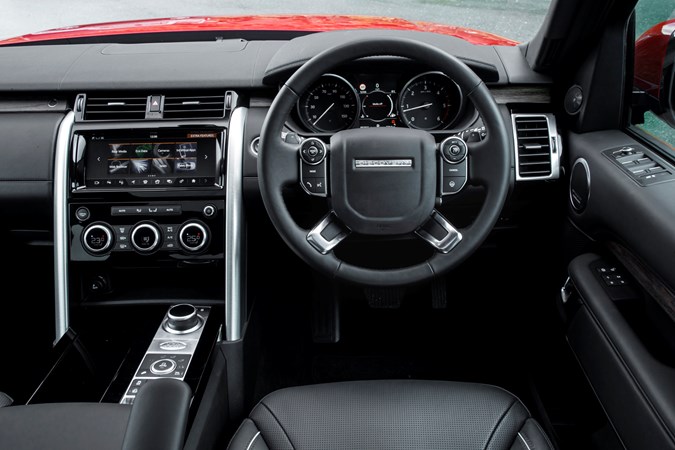
That goes some way to explain the £62,695 asking price, but at least it’s decently equipped:
- 21-inch alloy wheels
- Automatic LED lights front and rear
- Electrically heated windscreen
- Leather seats, heated in the first two rows
- Four-zone climate control and a heated wheel
- 14-speaker Merdian audio pack for the InControl Touch Pro multimedia system
- Electric tailgate and powered third-row seats
- A 360-degree camera system with a washer nozzle for the tailgate-mounted one
Maybe a sign of the times but it’s disappointing that adaptive cruise control isn’t on the standard kit roster.
Pushing the price of this one up to £74,355 are a number of options including the Firenze Red metallic paint (should be standard but costs £830), rear privacy glass (likewise but an extra £390), an electric towbar (useful but £985), heated and cooled seats in the first two rows with a heated third row (wonderful but be prepared to shell out £835) and the head-up display (not the best out there, so avoid forking out £1,035 by not bothering).
Verdict
More than 5,000 British orders have been placed for the new Land Rover Discovery already, reflecting the affection the market’s held the brand’s family-focused model in since the original’s 1989 debut.
There’s no denying it’s a fine all-rounder, with colossal amounts of space inside – its flexibility is a wow factor, too – but we can’t help but think that at the top of the range it feels a bit too expensive. Ramp up those options and you’d soon be in six-figure territory, which feels hard to justify for a car powered by a 2.0-litre engine.
Stick with one with a relatively modest price tag and select a few extras that are important to you.

Just so you know, we may receive a commission or other compensation from the links on this website - read why you should trust us.


